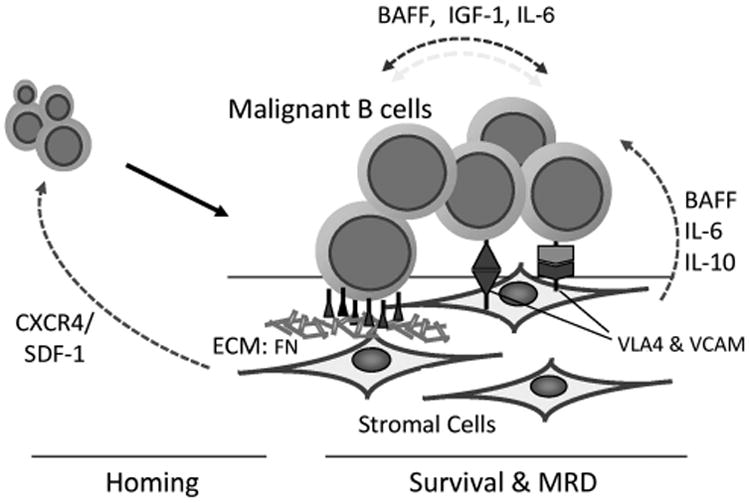Figure 1.

The malignant B cell and the TMEs. Malignant B cells have a dependent relationship with the TME. The TME consists of a host of extracellular matrix (ECM) components and supportive fibroblast-like stromal cells including mesenchymal stromal cells, dendritic cells, tumor-associated macrophages (nurse-like cells), osteoclasts, osteoblasts and endothelial cells among others. These cells contribute to both the soluble and physical dynamics of the TME. The soluble factors CXCR4, BAFF (B-cell activating factor), interleukin (IL)-6 and insulin-like growth factor-1 are produced by the tumor cells and the cellular components of the TME. These can function to recruit tumor cells to the TME where malignant B cells are afforded a survival advantage. Malignant B-cell survival, therapy resistance and MRD is controlled by the dynamic interplay between these chemokine networks and cellular adhesion molecules. Extrinsic stimuli, in turn, are translated to intrinsic biochemical signaling cascades modulating B-cell homing, survival and drug resistance within the context of B-cell microenvironment, with the BCR emerging as a critical component of these signaling networks.
